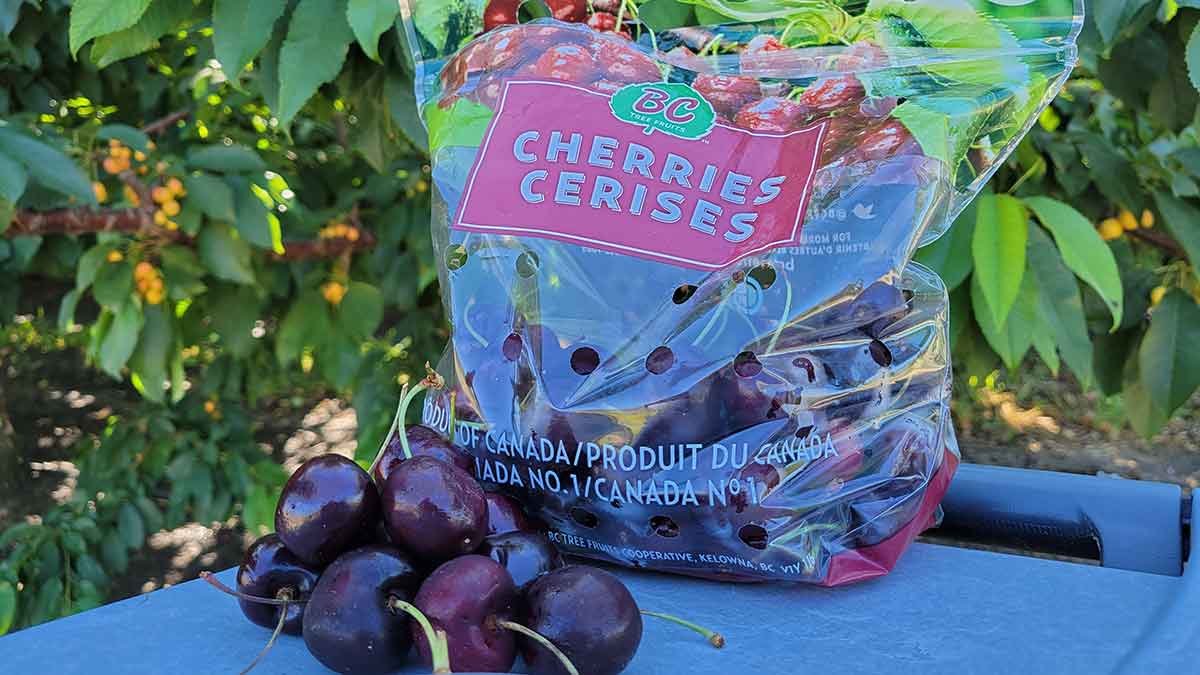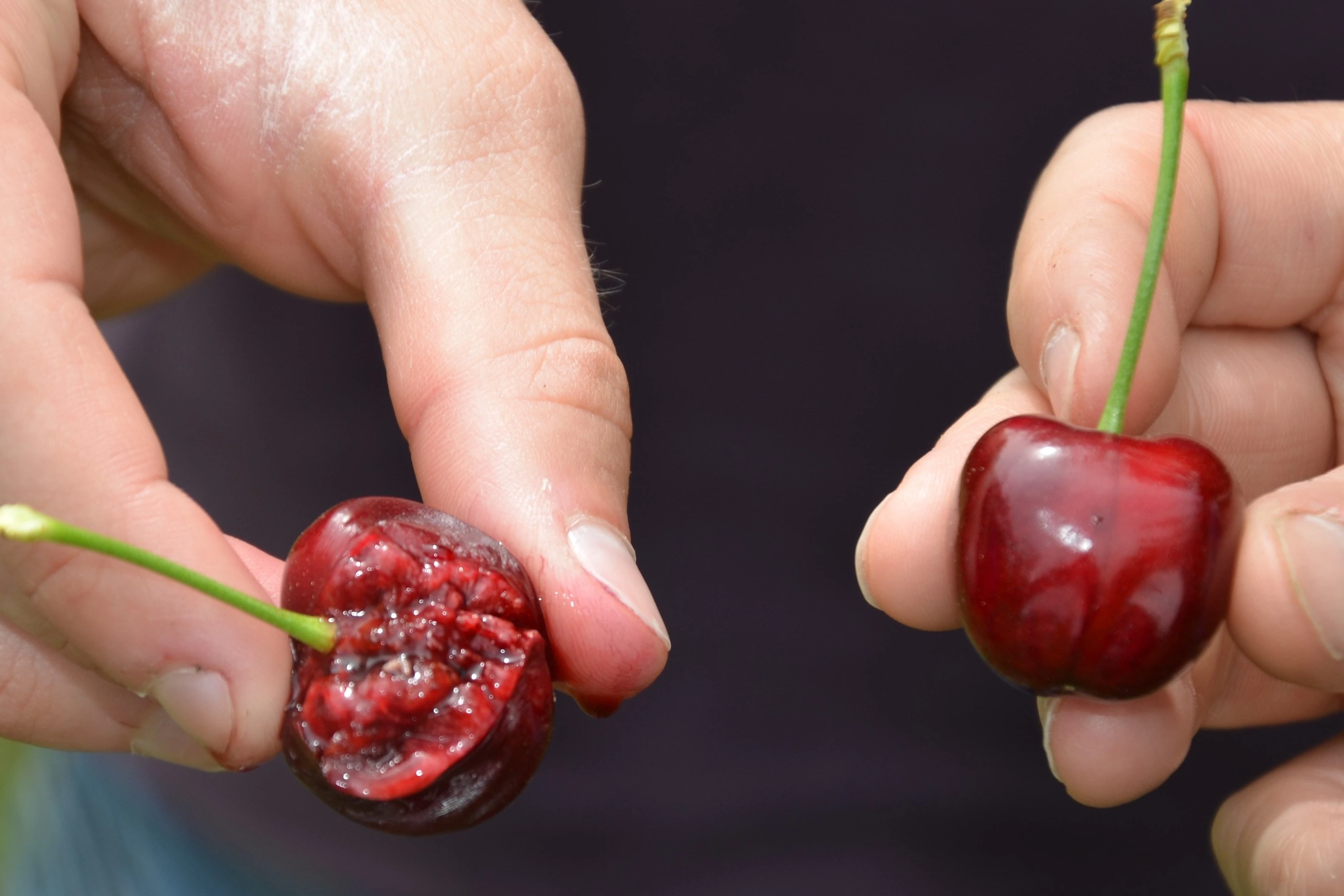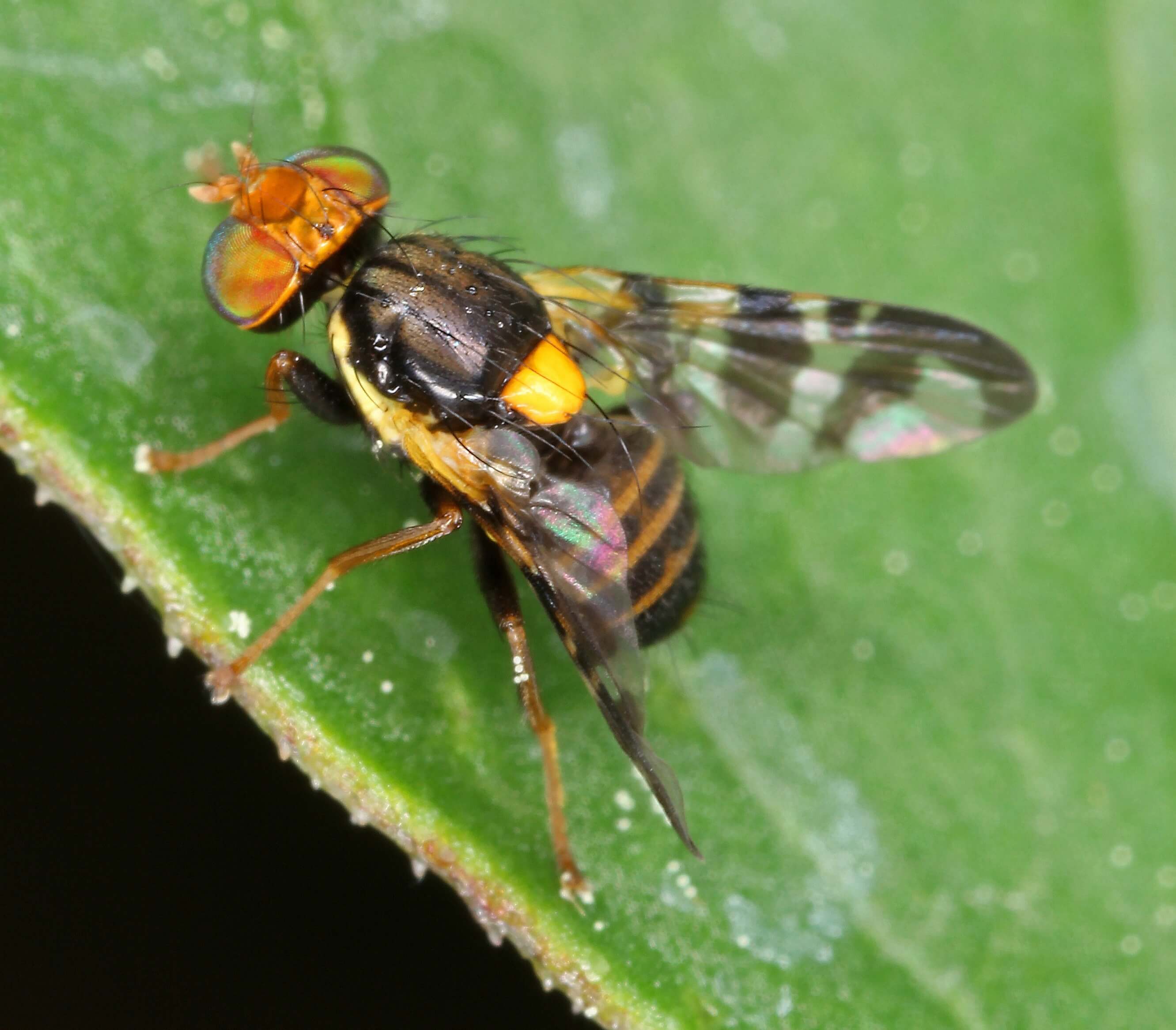BC produces nearly 95% of the sweet cherries grown in Canada, but the success story of this tasty Canadian summer fruit remains a mystery to many Canadians, partly because the industry has not focused on the Canadian market until now.
"95% of the cherries grown here are varieties developed right here in Canada with research funded by Canadian taxpayers and grown by Canadian farmers who have learned to grow them very well," says Erin Carlson, who cultivates about 100 acres of cherry trees in British Columbia.
"Our cherries should be a point of pride," she continues, "like poutine and maple syrup, something we offer as truly Canadian and are proud to eat."
Since the 1990s, the growth of the Canadian sweet cherry industry has focused primarily on collaboration with foreign countries to establish agreements for purchasing our fruits. Canadian cherries are exported to over 20 countries, such as Japan and South Korea, where they are highly appreciated and desired for their flavor, size, and freshness.
It is a successful strategy. In March, April, and May, the cherries on Canadian store shelves are imported from places like Chile or the United States—ironically, since about 80% of the cherry varieties grown worldwide today were invented in BC. Thanks to their warmer climates and shorter growing seasons, these countries produce mature cherries earlier in the year. Canadians, eager to see something new on store shelves, buy them.
Then, when the Canadian harvest occurs, from mid-June to early September, foreign markets are ending their harvest season. They tend to offer retailers late-season cherries, usually at lower prices, like a sort of clearance sale.
This can cause Canadian cherries, which can be placed alongside imported ones, to become confused or relatively more expensive. Like grapes, each cherry is not labeled with a separate sticker indicating its place of cultivation. Consumers need to look for "Canadian Cherries," "Grown in BC," or "Grown in Canada" on the plastic packaging or sometimes on the box in which the cherries were shipped.

Why look for Canadian labeling?
To an untrained eye, cherries may all look the same, but each variety has unique characteristics and flavor profiles. Early varieties include Santina, Tieton, Chelan, and Vans, while Lapin, Sweetheart, Sovereign, Skeena, Sentennial, and Staccatos mature later. Here are some great resources on varieties: https://www.bccherry.com/cherry-varieties/, https://www.summerlandvarieties.com.
"Our packing companies do an excellent job of selecting and packing quality fruit. That is why we are so successful with exports," says Danny Turner, an organic cherry grower from Creston BC.
Commercial cherries are hand-picked, quickly cooled, sometimes even during transit to the packing facility. There they are washed and generally scanned by high-tech machines that detect imperfections and measure color and size. Cherries suitable for Canadian shelves are sorted, packaged, cooled again, and shipped by truck or air.
The journey of a cherry from one end of the packing facility to the other takes about 25 minutes. They are quickly shipped to markets across Canada, ensuring their freshness. Canadian food safety standards ensure that cherries are grown according to specific rules and regulations and that growers and packers undergo food safety inspections to ensure compliance.
Some cherries are sweeter, others more acidic, and so on. A fun experiment is to taste cherries during the growing season to see which ones you prefer. There is no right answer. It's a matter of individual taste.
However, a quality cherry (unless it is a variety like Queen Anne, which is more yellow/orange/pink) is heart-shaped or round and quite large, about the size of a loonie or a toonie. They should be deep red in color, firm, with a smooth, unmarked outer surface and a soft, juicy, and sweet interior.
The best cherries have the stem attached, as the stem provides the necessary moisture to keep the fruit fresh when shipped. When buying cherries, the greener the stem, the fresher the cherry.
So this year, look for Canadian cherries. Just as we are proud of canola invented in the prairies, Canadian beef, or salmon, Canadians can be very proud of our sweet and succulent BC cherries! Look for them on your store shelves and support Canadian cherry growers.
Source: Canadian Food Focus
Image: Canadian Food Focus
Cherry Times - All rights reserved













